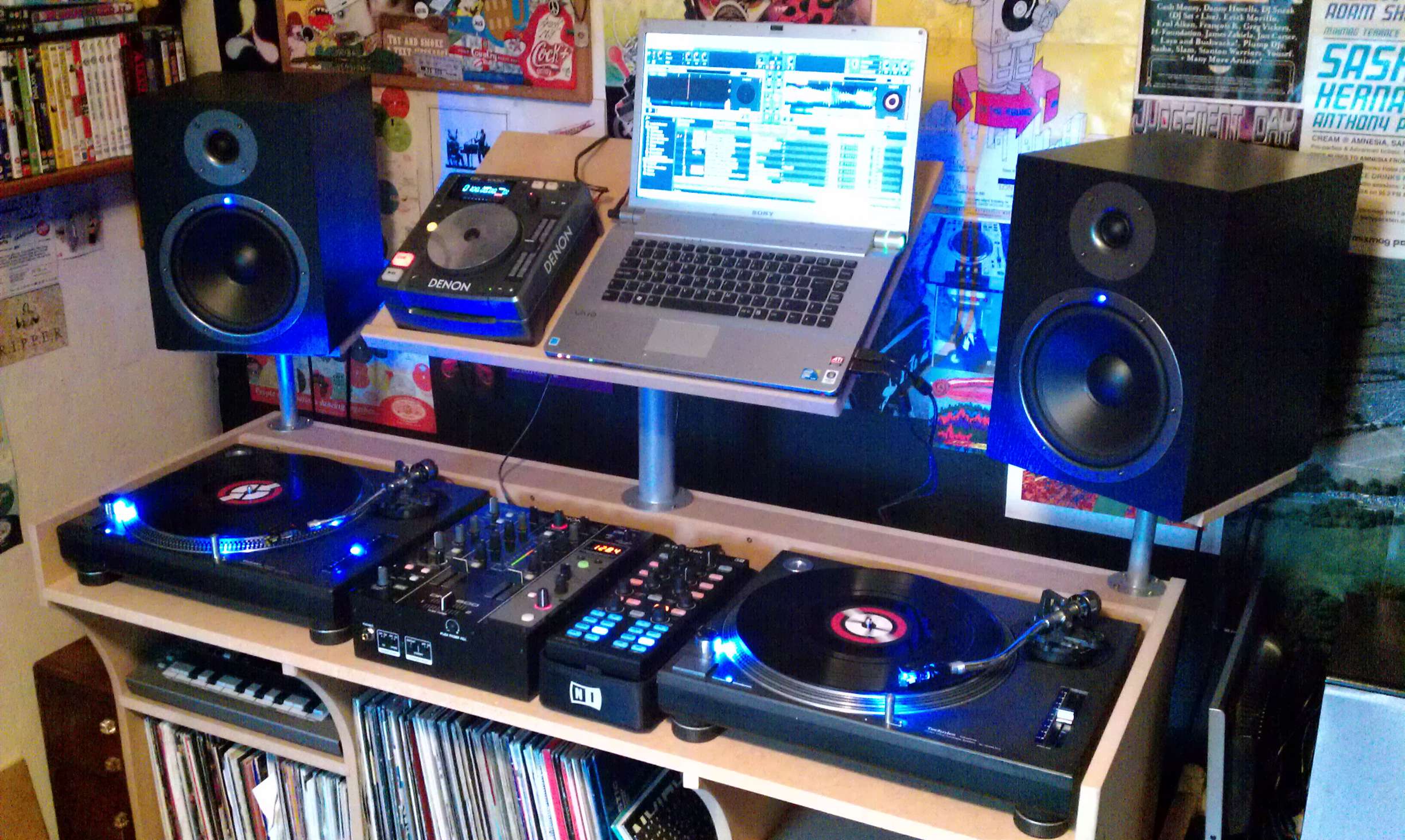
Last time in A Beginner DJ’s Guide To Monitors, Part 1: Choosing Your Speakers we talked through the options available to you and how to make sure you choose a speaker system that’s suitable for your needs.
This time, we’ll look at little tricks for setting your speakers up, and some common pitfalls to avoid, before we add the final piece to the jigsaw in part 3, when we’ll consider how to set up the room itself.
The aim of positioning (that means your speakers, your desk and your DJ gear), is so that when you’re musically “in the zone”, doing your thing, you’re also physically in the right place – in the “sweet spot” where you get the best possible sound and stereo imagery from your speakers. Why? Because it’s here that you’re hearing the sound as true to how it should be as possible. You’re likely to mix better, EQ better, and produce better results when recording your work if you’re monitoring it from the best physical position.
Five tricks to positioning speakers
- Put them in an equilateral triangle with your head – Imagine a triangle, with the speakers at two of the three points, and your head at the third. That’s how the speakers should be set up, with them pointing diectly at the third point, ie your head
- Make sure the tweeters are level with your ears – The high frequencies that the tweeters produce are the most directional of all, and so it’s imperative that you get the “full force” of them. One trick here is to put wedges under the speakers to point them up at your head, should they be on a desk and too low down. This reduces one downside of not being able to…
- Put your speakers on stands – Part of what we’re trying to achieve here is as little bouncing of the soundwaves off objects before they reach your ears as possible. Putting them on stands usually helps with this immensely. Otherwise, if they’re on a desk, the desk surface will bounce the signal to your ears, colouring what you hear
- Try and keep them away from walls and corners – Leave a couple of feet if you can between the speakers and the wall (not always possible; we can’t do it here at Digital DJ Tips, for intance). And try and make sure that if the speakers are near a corner, the distance between both walls and the speaker is different. Again, we’re trying to prevent excessive “bouncing” of sound
- Put the subwoofer half-way between the two main speakers, pointing at you – Subwoofers don’t need anywhere near as careful positioning as your main speakers because bass is not very directional (that’s why you only have one sub-woofer), so if you can’t do this don’t fret too much. Indeed, one trick that I’ve never tried but that I read in an M-Audio speaker guide once is to put your subwoofer on your chair with a bassy track going, then crawl around your room on the floor. Where you hear the bass loudest is where you should put your subwoofer!
Of course, it goes without saying that you shouldn’t have anything obstructing the line between you and your speakers.
Finally…
You won’t be able to do all of the above in all circumstances, and so you’ll have to make compromises. The important thing is to trust your ears, preferably using as tune you know well to test as you make adjustments. Next time: Room acoustics…
Check out the other parts of this series:
- A Beginner DJ’s Guide To Monitors, Part 1: Choosing Your Speakers
- A Beginner DJ’s Guide To Monitors, Part 3: Getting Your Room Acoustics Right
How much of the above have you managed to achieve in your own personal home practice studio? How do you find it best to set up your speakers for accurate mixing and monitoring? Please share your thoughts in the comments.








